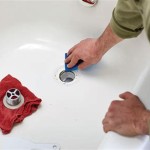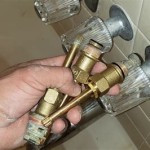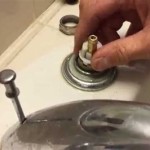How To Wash A Big Dog Without A Bathtub
Washing a large dog can be a challenging task, particularly when access to a traditional bathtub is limited. The size and strength of these animals necessitate alternative methods that prioritize both the dog's comfort and the owner's safety. This article outlines several effective strategies for washing a large dog without a bathtub, encompassing preparation, washing techniques, and post-wash care.
Choosing the Right Location and Supplies
The selection of an appropriate location is paramount. The area should be spacious enough to accommodate the dog and the owner, and it should be easy to clean. Outdoor spaces such as a backyard, patio, or even a large driveway are often ideal, weather permitting. If washing indoors, a walk-in shower, utility room, or tiled area is preferable. The chosen location should have access to a water source and drainage.
Gathering the necessary supplies before starting the washing process is crucial for efficiency and minimizing stress for both the dog and the owner. The following items are typically required:
*Dog shampoo: Select a shampoo specifically formulated for dogs. Baby shampoo or human shampoos can be irritating to a dog's skin due to differences in pH levels. Consider the dog's skin type and coat; options include hypoallergenic shampoos for sensitive skin, medicated shampoos for specific dermatological conditions (as prescribed by a veterinarian), and shampoos designed to enhance coat shine or manage shedding.
*Large bucket or tub: Although a bathtub is not being utilized, a large bucket or a smaller, portable tub can be helpful for mixing shampoo and water or for directly applying water to specific areas. Ensure the container is sturdy and stable.
*Water source: A garden hose with an adjustable nozzle is ideal for outdoor washing. For indoor washing, a sink sprayer, a showerhead, or a large pitcher can be used. Water temperature is critical; it should be lukewarm, neither too hot nor too cold, to avoid discomfort or shock to the dog.
*Washing mitt or sponge: A soft washing mitt or sponge helps to distribute shampoo evenly and gently massage the dog's skin.
*Multiple towels: Several large, absorbent towels are required for drying the dog after the wash. Consider microfiber towels, which are highly absorbent and quick-drying.
*Dog brush: Brushing before and after the wash is essential. Pre-wash brushing removes loose hair and mats, making the washing process more effective. Post-wash brushing helps to detangle the fur and promote healthy coat.
*Treats: Positive reinforcement is key to a successful washing experience. Providing treats throughout the process can help the dog associate washing with a positive experience and reduce anxiety.
*Optional items: Depending on the dog's temperament and the washing environment, consider the following: non-slip mat to prevent slipping, waterproof apron for the owner, ear cleaner for after the wash, and a dog-specific blow dryer.
Preparing the dog for the bath is equally important. This involves a thorough brushing to remove loose hair and mats, trimming the dog's nails if necessary, and gently desensitizing the dog to the water source by allowing it to sniff and investigate the equipment.
Effective Washing Techniques
Once the location and supplies are prepared, the washing process can begin. The key is to remain calm and patient, communicating with the dog in a reassuring tone throughout the process. The steps below outline a systematic approach to washing a large dog without a bathtub:
*Wetting the Coat: Begin by thoroughly wetting the dog's coat with lukewarm water. Start from the neck and work downwards, ensuring that the water penetrates the fur down to the skin. Avoid spraying water directly into the dog's face, ears, or eyes. A gentle, consistent spray is preferable. Pay attention to areas that tend to accumulate dirt, such as the paws, underbelly, and tail.
*Applying Shampoo: Dilute the dog shampoo with water according to the manufacturer's instructions. This helps to distribute the shampoo more evenly and prevents irritation. Apply the diluted shampoo to the dog's coat, starting from the neck and working downwards. Use the washing mitt or sponge to gently massage the shampoo into the fur, creating a lather. Avoid getting shampoo in the dog's eyes, ears, or mouth. Pay particular attention to areas with dirt or odor.
*Rinsing Thoroughly: Rinsing is the most critical step in the washing process. All traces of shampoo must be removed to prevent skin irritation. Use lukewarm water to rinse the dog's coat thoroughly, starting from the neck and working downwards. Continue rinsing until the water runs clear and no suds remain. Pay close attention to areas that are prone to retaining shampoo, such as the paws, underbelly, and around the ears.
*Optional Second Wash: If the dog is particularly dirty or smelly, a second wash with shampoo may be necessary. Repeat the shampooing and rinsing process as described above.
*Head and Face Washing: Washing the head and face requires extra care. Use a damp cloth or sponge to gently wipe the dog's face, avoiding the eyes and nose. To clean around the ears, use a cotton ball dampened with ear cleaning solution (as recommended by a veterinarian). Never insert anything into the ear canal. Be gentle and patient, as this area can be sensitive.
Throughout the washing process, monitor the dog's reaction. If the dog becomes anxious or stressed, take a break and offer reassurance. Use positive reinforcement with treats and praise to encourage cooperation.
Post-Wash Care and Drying Techniques
Proper drying after washing is essential to prevent chills and skin problems. The drying process should be gentle and thorough. The following steps outline effective drying techniques:
*Initial Towel Drying: Begin by thoroughly towel-drying the dog's coat. Use multiple large, absorbent towels to remove as much water as possible. Squeeze the water out of the fur rather than rubbing vigorously, which can cause matting. Pay particular attention to areas that tend to retain water, such as the underbelly, paws, and around the ears.
*Blow Drying (Optional): If the dog is comfortable with it, a dog-specific blow dryer can be used to speed up the drying process. Use a low heat setting and keep the dryer moving to prevent overheating. Avoid directing the airflow directly into the dog's face or ears. If the dog is afraid of the blow dryer, skip this step and rely on towel drying.
*Brushing While Drying: While towel-drying or blow-drying, brush the dog's coat to help detangle the fur and promote airflow. This helps to prevent matting and ensures that the coat dries evenly.
*Allowing Natural Drying: After the initial towel drying or blow drying, allow the dog's coat to air dry completely. Keep the dog in a warm, draft-free environment until the coat is fully dry. Monitor the dog for signs of shivering or discomfort and provide extra warmth if needed.
*Ear Cleaning: After the bath, clean the dog's ears with a veterinarian-approved ear cleaning solution. Use a cotton ball to gently wipe the ear canal, removing any dirt or debris. Do not insert anything deep into the ear canal, as this can cause injury. If the dog shows signs of ear infection, such as redness, swelling, or discharge, consult a veterinarian.
Following the wash, provide plenty of fresh water and a comfortable place for the dog to rest. Monitor the dog's skin for any signs of irritation or allergic reaction to the shampoo. If any problems arise, consult a veterinarian.
Washing a large dog without a bathtub requires careful planning, preparation, and patience. By selecting the right location and supplies, employing effective washing techniques, and providing thorough post-wash care, owners can ensure a safe and positive experience for their canine companions.

How To Give Your Large Dog A Bath With Pictures Wikihow Pet

Kanis Professional Stainless Steel Dog Bathing Station Groomin

Furesh Steper Big Dog Bath Tub With Stairs Elevated Portable Foldable Wash Station Steps For Bathing Shower And Grooming Indoor Outdoor Medium To

Vevor 62 Inch Professional Dog Grooming Tub Stainless Steel Pet Bathing Left Door Large Wash With Faucet Walk In Step Accessories Washing Station Bath Com

Vevorbrand 50 Inch Dog Grooming Tub Professional Stainless Steel Pet Bath With Steps Faucet Accessories Washing Station Left Door Com

Stainless Steel Dog Bathing Tubs Forever

50 Professional Dog Grooming Tub Stainless Steel Pet Bathing Station For Big Cat Pig With Faucet And Wash Shower Com

How Often Should You Bathe Your Dog Guide Based On Breed Lifestyle

How To Set Up A Dog Washing Station Thermaland Oaks

11 Best Outdoor Dog Baths Plus 5 Pro Tips
Related Posts








